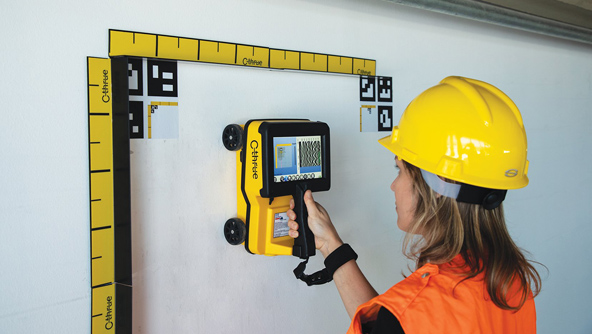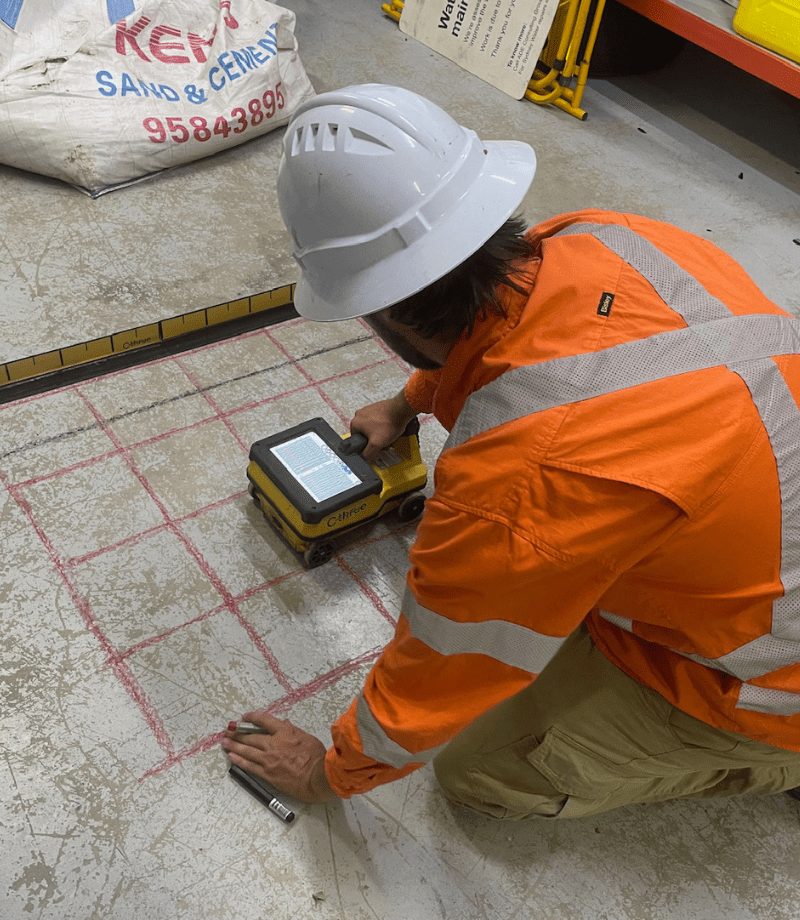Reliable Concrete Scanning Approaches for Construction Projects
Reliable Concrete Scanning Approaches for Construction Projects
Blog Article
Reveal the Transformative Power of Concrete Scanning in Making The Most Of Efficiency and Safety And Security
Concrete scanning has arised as an essential tool in the construction industry, providing unrivaled benefits in improving task effectiveness and guaranteeing safety and security standards. The transformative power of concrete scanning lies in its capacity to give real-time information and thorough insights, changing how projects are planned and implemented.
Significance of Concrete Scanning
Ensuring the structural stability and safety of building jobs begins with the vital step of performing complete concrete scanning. Concrete scanning is a non-destructive method used to identify and map subsurface components within concrete frameworks. This process is essential in determining possible dangers, such as rebar, post-tension cords, and avenues, that may be hidden within the concrete. By making use of innovative modern technologies like ground-penetrating radar (GPR) and electro-magnetic induction, building and construction groups can accurately locate these aspects without triggering any type of damage to the framework.
Furthermore, concrete scanning helps in maximizing job timelines and budget by avoiding unanticipated costs and hold-ups that may emerge due to unexpected obstructions within the concrete. Eventually, spending in comprehensive concrete scanning is a positive approach that enhances both efficiency and safety and security in building projects.
How Concrete Scanning Works
Concrete scanning operates as a vital device in construction jobs by using innovative technologies to detect and map subsurface components without creating architectural damage. Ground Permeating Radar (GPR) and Electromagnetic Induction (EMI) are 2 main approaches utilized in concrete scanning.
During the scanning process, the data accumulated is examined in real-time, enabling immediate identification of potential hazards or obstacles beneath the surface area. By using these innovative technologies, concrete scanning dramatically decreases the threat of expensive damages and injuries on building sites.
Advantages of Concrete Scanning
One of the key advantages of concrete scanning is the capacity to find and find ingrained items such as rebar, post-tension cable televisions, and channels precisely. Concrete scanning aids in preparation and creating much more successfully, as it offers specific information concerning the place and depth of architectural elements.

Study: Concrete Scanning Success

In one more instance, a building business made use of 3D concrete scanning to evaluate the condition old concrete structures in a historic structure. The thorough scans offered important insights right into the level of damage and assisted focus on upkeep efforts effectively. By proactively attending to areas of issue determined through scanning, the firm was able to extend the life-span of the framework and make sure resident safety and security.
These study underscore the transformative power of concrete scanning in boosting performance, accuracy, and safety in construction tasks.
Carrying Out Concrete Scanning in Projects
Carrying out advanced scanning innovations throughout construction tasks has actually become increasingly important for boosting precision and safety. By incorporating concrete scanning right into task planning and implementation, building teams can identify prospective threats, such as rebar or post-tension cables, concealed within concrete structures. This positive technique reduces the danger of accidents, hold-ups, and expensive rework, ultimately bring about more efficient task timelines and budget plans.
To carry out concrete scanning efficiently, project managers must team up carefully with seasoned scanning specialists to establish one of the most ideal scanning methods for the particular job demands. Engaging scanning professionals from the early stages of a task enables the team to develop thorough scanning plans that attend to essential locations of issue and ensure comprehensive information collection.
In addition, incorporating concrete scanning into routine project workflows can improve decision-making procedures, as real-time check data gives immediate insights right into the condition of concrete structures - Concrete Scanning. This data-driven technique assists in informed problem-solving and enables teams to make modifications promptly, promoting learn this here now a culture of performance and security throughout the job lifecycle

Conclusion
To conclude, concrete scanning plays an important role in improving performance and security in building projects. By making use of advanced technology to map and discover out underlying frameworks within concrete, this procedure aids to avoid pricey mistakes, make certain architectural stability, and lessen threats on website. With the capability to discover concealed aspects and give precise information, concrete scanning verifies to be an important tool for optimizing project end results and optimizing general success.
Concrete scanning is a non-destructive technique used to find and map subsurface components within concrete structures. Additionally, concrete scanning assists in optimizing project timelines and budget by avoiding unexpected prices and delays that may arise due to unanticipated obstructions read more within the concrete. One significant case study involves a massive renovation job where concrete scanning played a vital function in here are the findings guaranteeing project success.In an additional situation, a building firm used 3D concrete scanning to assess the condition of maturing concrete frameworks in a historical structure. By integrating concrete scanning right into job preparation and implementation, construction teams can identify possible dangers, such as rebar or post-tension cords, concealed within concrete frameworks.
Report this page